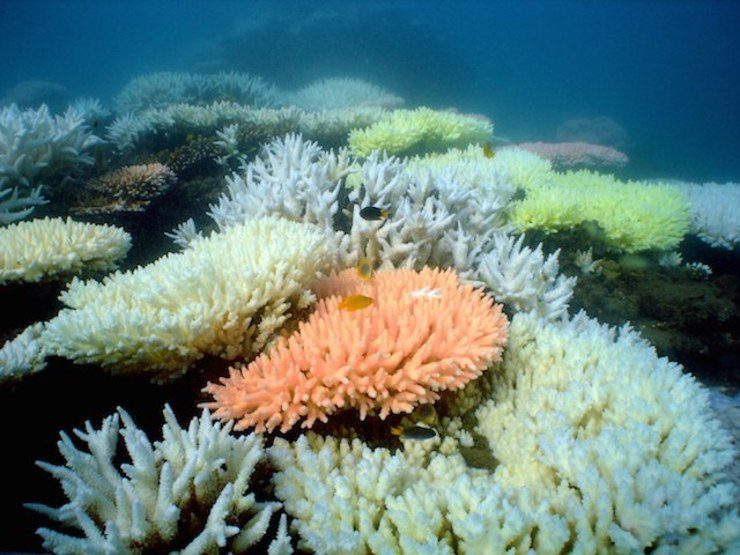SUMMARY
This is AI generated summarization, which may have errors. For context, always refer to the full article.

MAJURO, Marshall Islands – The Marshall Islands is experiencing its worst-ever coral bleaching as global warming threatens reefs across the entire northern Pacific, scientists said Monday, December 22.
Marine researchers said an El Niño weather pattern had been developing in recent months, raising ocean temperatures and stressing delicate coral reefs.
“The worst coral bleaching event ever recorded for the Marshall Islands has been occurring since mid-September,” Karl Fellenius, a Majuro-based marine scientist with the University of Hawaii told Agence France-Presse.
C. Mark Eakin, manager of the US National Oceanic and Atmospheric Administration’s Coral Reef Watch program, said recent observations showed the problem was widespread across the vast waters of the northern Pacific.
“Major bleaching was seen in Guam and the Commonwealth of the Northern Marianas Islands, the northwestern Hawaiian Islands (NWHI), the Marshall Islands, and Kiribati,” he said.
“Thermal stress levels set new record highs in CNMI and the NWHI and we saw the first widespread bleaching event in the main Hawaiian Islands.”
Fellenius said coral bleaching was a naturally occurring phenomenon but not on the scale currently being seen.
“While bleaching can occur on very hot days in pools of water with little circulation (such as) very low tides on reef flats, it has become a global problem due to greenhouse gas emissions causing elevated temperatures under climate change.”
He said sea surface temperatures had been on average half to a full degree Celsius higher than normal for months, adding: “This does not seem like a lot but it makes a big difference to corals.”
Fellenius said the last major bleaching event was in 1997, when an exceptionally strong El Niño system affected about a quarter of the world’s coral reefs.
He said indications were that the latest episode had affected up to 75% of smaller corals and 25% of the larger varieties at some sites in the Marshalls.
He said the bleached coral was becoming covered with algae, hindering its chances of recovery.
The World Meteorological Organization (WMO) raised the alarm about rising sea temperatures this month on the sidelines of UN climate talks in Lima, saying 2014 was set to be the hottest year on record, consistent with man-made climate change.
“What is particularly unusual and alarming this year are the high temperatures of vast areas of the ocean surface,” WMO chief Michel Jarraud said.
The Asian Development Bank warned last month that widespread coral bleaching would have a major impact on Pacific island nations, many of which are heavily reliant on tourism. – Rappler.com
Add a comment
How does this make you feel?
There are no comments yet. Add your comment to start the conversation.